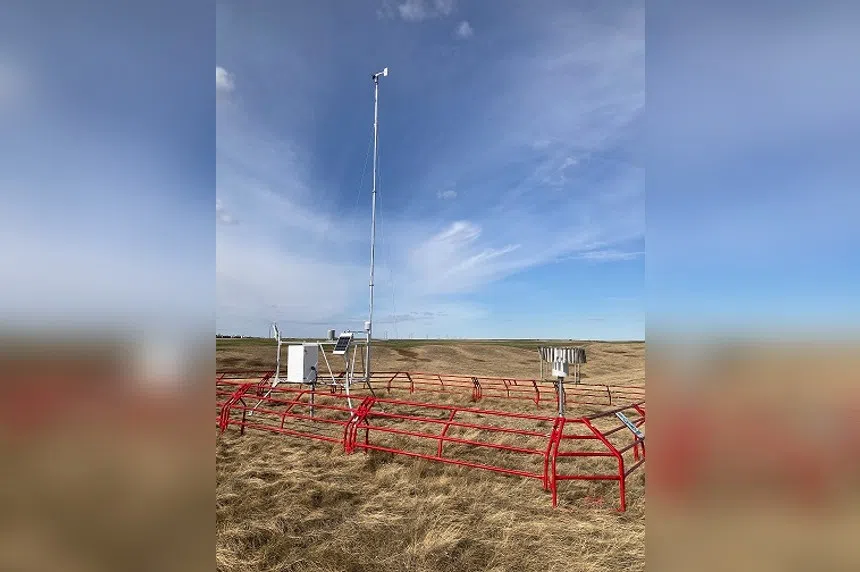It will soon be easier to predict weather events like the one that hit central Saskatchewan earlier this week, thanks to new weather monitoring stations.
The Water Security Agency has invested $600,000 to install 12 weather and soil monitoring stations around the province. The stations will track temperature, humidity, wind speed and direction, and precipitation.
The new stations will do more than just monitor weather. Each station will also collect soil moisture and temperature levels at three depths.
“It really gives us our forecasters that extra layer of understanding in areas where we didn’t have a lot of data, historically,” Water Security Agency spokesperson Patrick Boyle said.
Boyle said the new stations are going to benefit the Saskatchewan Public Safety Agency in responding to weather events, because the stations are in multiple locations.
“A lot of different areas that gives us a lot of ability to understand and help better forecast any of those rain events that we just went through,” Boyle said.
The stations are located near Arcola, Candiac, Climax, Francis, Hazenmore, Holdfast, Klintonel, Mankota, Milestone, Quinton, Radville and Shaunavon.
“What we’ll do is collect that data, understand it, and then we’ll be able to reference it knowing that this major rainfall event happened on this day at this time and what’s currently going on in the rivers and lake systems,” Boyle said.
Boyle said the soil monitoring aspect will be invaluable to the agriculture sector, providing more information to farmers.
“That soil data at three different depths, and some of that wind and temperature data, is very valuable to a lot of producers,” he said.
The weather stations will not just be used in the summer for rainfall forecasts. They will also collect snowfall data, and provide information for spring runoff which can be vital for producers.
All of the information collected at the weather stations will be made public.
“The openly available data from these stations is invaluable for our members and their ratepayers,” Saskatchewan Association of Rural Municipalities president Ray Orb said.
“We are happy to have access to important information that our municipalities can use to make real progress in municipal planning, to make our communities safer.”











